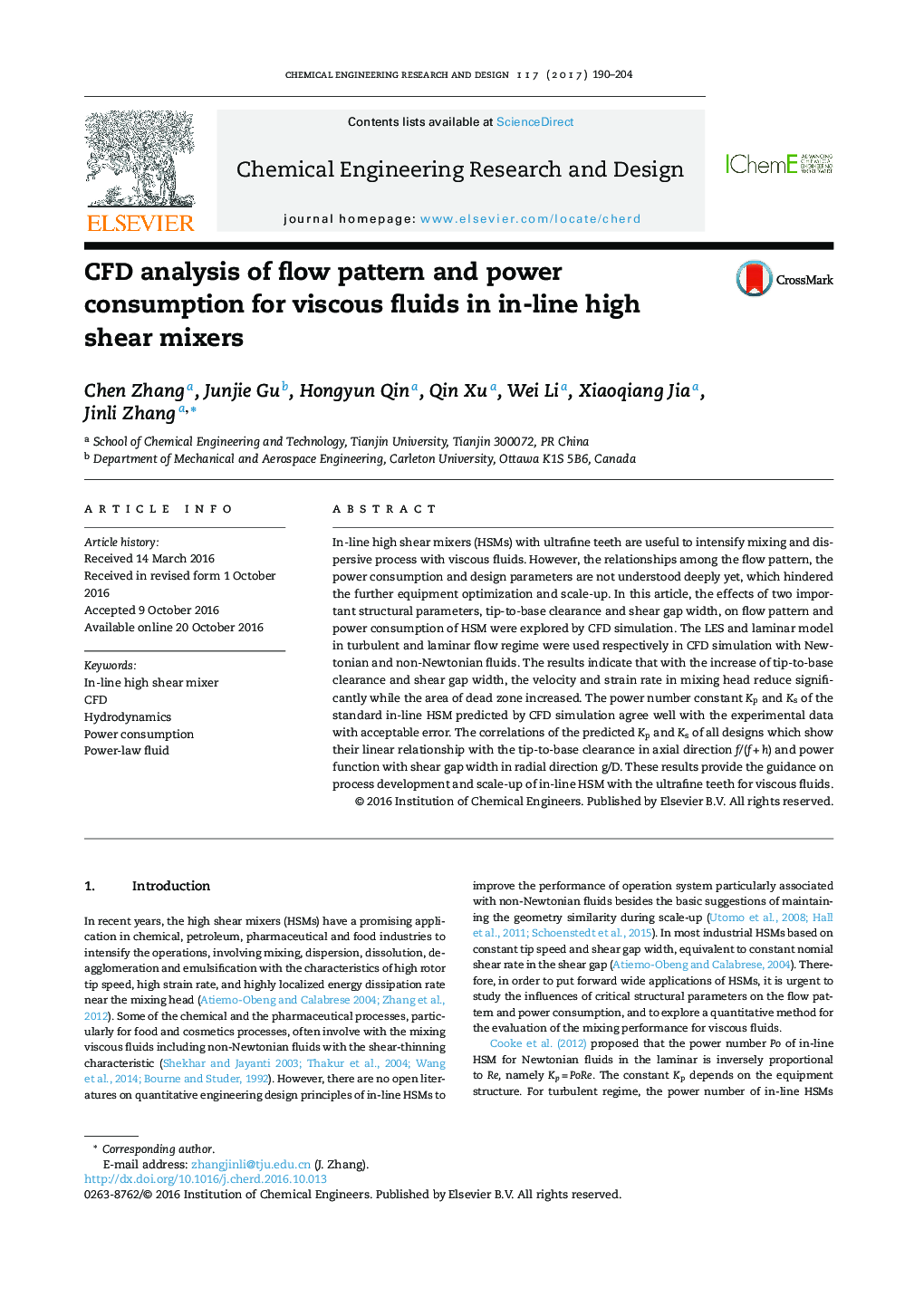| Article ID | Journal | Published Year | Pages | File Type |
|---|---|---|---|---|
| 4987344 | Chemical Engineering Research and Design | 2017 | 15 Pages |
â¢The CFD simulation of the flow pattern for Newtonian and power-law fluids in HSMs.â¢Laminar and LES models were adopted respectively for laminar and turbulent regime.â¢Geometric parameters on flow pattern and power consumption were studied firstly.â¢A correlation of power consumption was built for in-line HSM.â¢The correlation considers the axial clearance and radical width.
In-line high shear mixers (HSMs) with ultrafine teeth are useful to intensify mixing and dispersive process with viscous fluids. However, the relationships among the flow pattern, the power consumption and design parameters are not understood deeply yet, which hindered the further equipment optimization and scale-up. In this article, the effects of two important structural parameters, tip-to-base clearance and shear gap width, on flow pattern and power consumption of HSM were explored by CFD simulation. The LES and laminar model in turbulent and laminar flow regime were used respectively in CFD simulation with Newtonian and non-Newtonian fluids. The results indicate that with the increase of tip-to-base clearance and shear gap width, the velocity and strain rate in mixing head reduce significantly while the area of dead zone increased. The power number constant Kp and Ks of the standard in-line HSM predicted by CFD simulation agree well with the experimental data with acceptable error. The correlations of the predicted Kp and Ks of all designs which show their linear relationship with the tip-to-base clearance in axial direction f/(f + h) and power function with shear gap width in radial direction g/D. These results provide the guidance on process development and scale-up of in-line HSM with the ultrafine teeth for viscous fluids.
